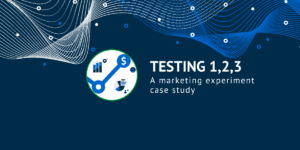As a new brand, Kradle CBD for Dogs was just gaining traction in the marketplace. Awareness growth and an aggressive sales target meant the brand was willing to spend on digital marketing to generate sales. However, an initial campaign showed low sales results from a high spend, without accurate attribution of sales to marketing dollars. The most prominent metric available when we partnered with the business was cost-per-acquisition (CPA) and the value was at a high level. Lowering the CPA was our first and most important task. After some pilot launches and campaign and channel optimizations, we successfully lowered our client’s CPA by 90%.
Setting up Tracking and Attribution: All About the Details
In order to properly attribute sales to marketing spend, we had to establish a really clean way to track our programs. Knowing we’d be testing various channels and messaging strategies, reporting on what levers generated the most sales was critical to the brand’s success.
At Response labs, we take a baseline approach to the tracking we implement on all campaigns and applied this standard to Kradle:
- Establish a systematic UTM tracking approach
- Install appropriate pixels across sites to fuel remarketing audiences and ultimately track the success of remarketing efforts
- Set up Google Analytics and Google Tag Manager to measure the agreed upon KPIs
- Create an always available Dashboard to show our tracked metrics
- Formulate weekly insights reports to drive optimization recommendations
Dashboards are an incredible tool to pull metrics from multiple sources into one, clean view allowing anyone on an internal and external team to view results in real time, as often as they’d like.
Any marketer has experienced the rush to get a campaign to market, leaving little time for thorough attribution planning. The steps above aren’t complicated, but when developing a go to market timeline, they should find a place early in the process so they can’t be missed or skipped in a rush to go live.
Kicking Off the Campaign: From Launch to Finding the Right Mix
We set up and launched Google Ads and Facebook Ads campaigns that successfully maneuvered the strict advertising policies for marketing CBD on both platforms.
Advertising policies for CBD restrict the direct sale of CBD, requiring a brand to highlight product benefits and end state effects rather than the product ingredients themselves. We also had to establish a set of landing pages that removed the reference of CBD all together in order to run our ads on these platforms. In the end, these requirements offered us flexibility for testing various messages to see what our audiences were drawn to.
Our audiences were filled with past site visitors, lookalikes and CBD friendly consumers. We focused on a creative strategy touting product benefits that showcased the product results and found that promoting a “calming, stress solution” for dogs resonated on an emotional level with our audience and led to our highest level of clicks on paid platforms.
In addition to Google and Facebook, we launched Kradle’s first programmatic campaign, driving millions of impressions, surpassing industry benchmarks on CTR and CPC through lookalike and lifestyle audience targeting, and built a robust remarketing audience accounting for the lion’s share of display conversions for Kradle.
Outbound advertising is always one piece of the puzzle. Once we reached campaign stability on the paid platforms, we turned our attention to the entire customer journey experience. In order to truly reduce CPA, we identified gaps in the customer experience that impacted conversions, leading to revamping the product pages on Kradle’s website and adding email journeys promoting repurchase with CBD education and promotions to our audience.
When all of the pilot work and optimizations were complete, we zeroed in on campaigns that delivered on brand awareness messaging, product benefit marketing and key seasonal moments that drove the most conversions.
How’d we do?
Combined, the digital marketing efforts resulted in a 10-14% increase in sales month over month with a more efficient spend. We achieved a 90% reduction in CPA in the first 3 months working on the campaign, and increased the on site conversion rate from .49% to over 2.0% at peak campaign performance.
How do we know?
Reviewing our campaign performance every week allowed us to hone in on the top performing channels, messages and audiences. We focused on making incremental improvements versus sweeping changes to maintain a consistently positive impact to the CPA. Every new strategy was approached as a pilot and tested first before a full blown implementation, allowing us to spend the budget in a really smart way and gather a ton of learnings.



